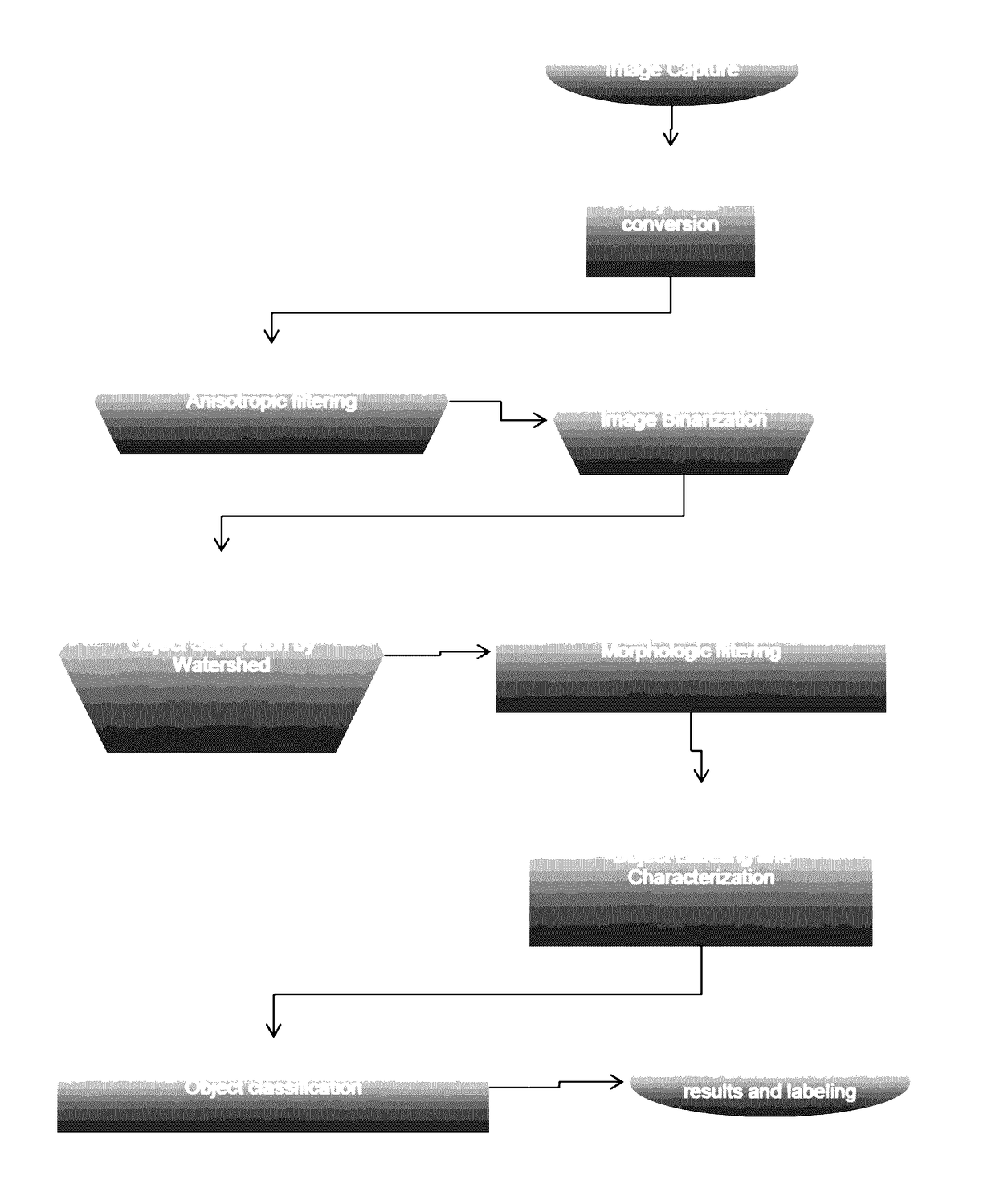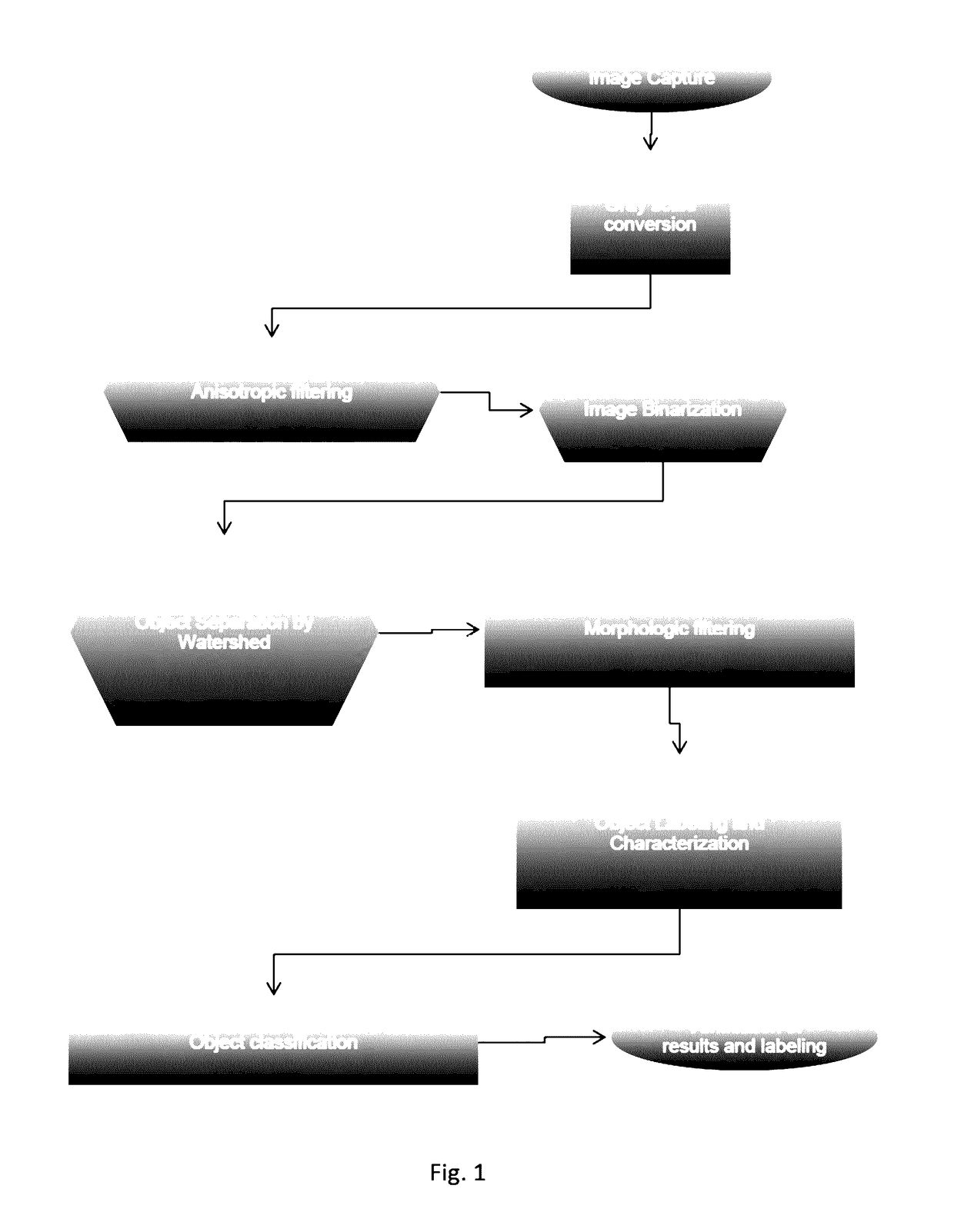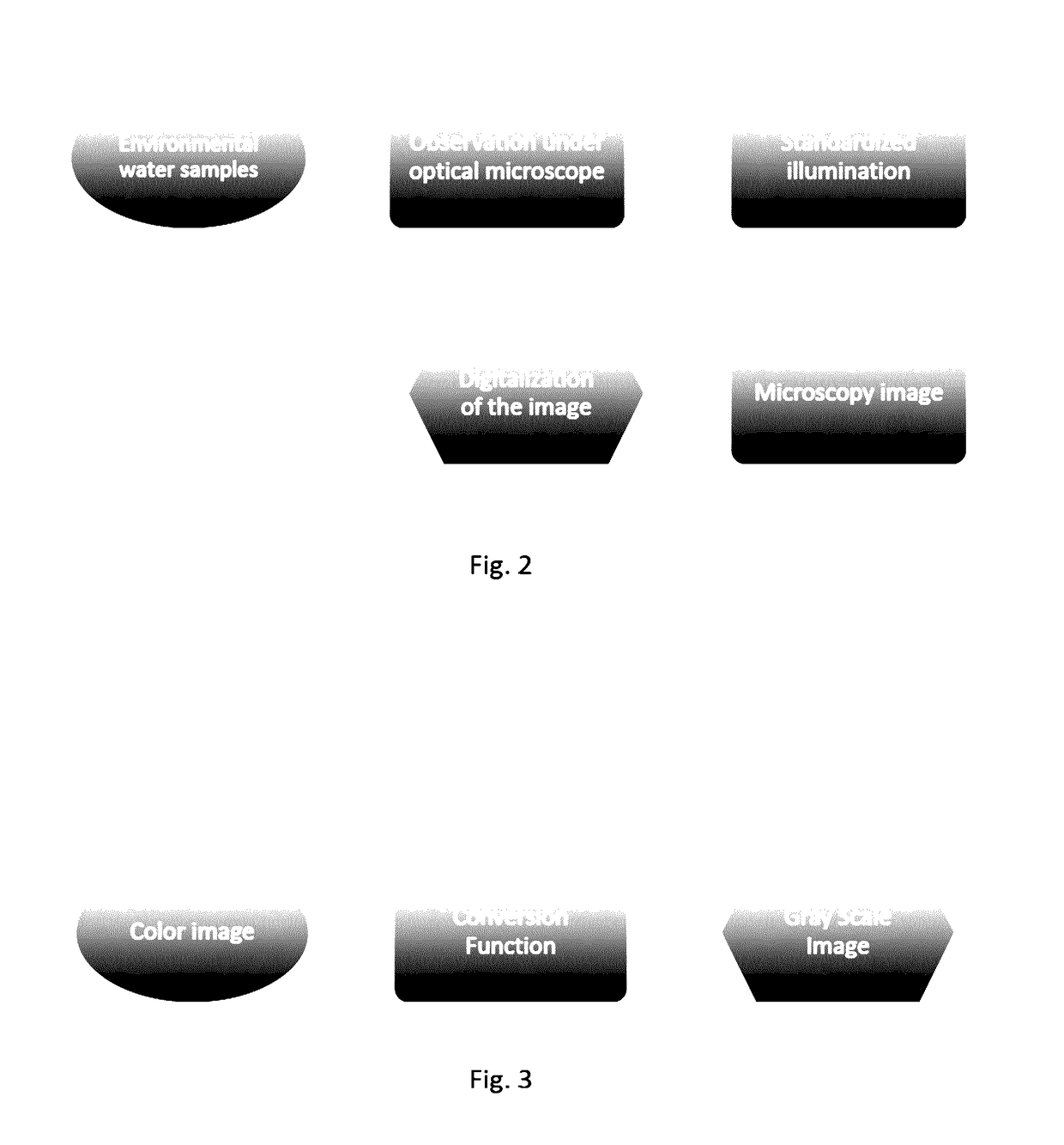System for the identification and quantification of helminth eggs in environmental samples
a technology of environmental samples and helminth eggs, applied in the field of process and system for identifying and quantifying helminth eggs in environmental samples, can solve the problems of high risk of infection for product consumers, intestinal worms, and use of wastewater, and achieve the effects of reducing the risk of infection for agricultural workers and their families, and reducing the risk of infection
- Summary
- Abstract
- Description
- Claims
- Application Information
AI Technical Summary
Benefits of technology
Problems solved by technology
Method used
Image
Examples
Embodiment Construction
[0078]The main process / system is formed by various processes, such as can be seen in FIG. 1 as well as FIGS. 2 through 10, the first of them consists in the acquiring of training images, with different types of helminth eggs, the photograph files consisted in a total of 720 images, including 11 helminth egg species selected for the study (FIGS. 11a1 through 11a2), fertile Ascaris lumbricoides, (FIG. 11a3) infertile Ascaris lumbricoides, (FIG. 11b) Toxocara canis, (FIG. 11c) Trichuris trichiura, (FIG. 11d) Hymenolepis diminuta, (FIG. 11e) Hymenolepis nana, (FIG. 11f) Taenia solium, (FIG. 11g) Schistosoma mansoni, (FIG. 11h) Ancylostoma duodenale and Necator americanus (Hookworms), (FIG. 11i) Fasciola hepatica, Fasciolopsis buski (Liver fluke). 50% was used as a set of data for training, while the other 50% was used to carry out the validation of the system.
[0079]The images acquired are in full color so that it is necessary to convert each one of them into gray scale, such as can be s...
PUM
 Login to View More
Login to View More Abstract
Description
Claims
Application Information
 Login to View More
Login to View More - R&D
- Intellectual Property
- Life Sciences
- Materials
- Tech Scout
- Unparalleled Data Quality
- Higher Quality Content
- 60% Fewer Hallucinations
Browse by: Latest US Patents, China's latest patents, Technical Efficacy Thesaurus, Application Domain, Technology Topic, Popular Technical Reports.
© 2025 PatSnap. All rights reserved.Legal|Privacy policy|Modern Slavery Act Transparency Statement|Sitemap|About US| Contact US: help@patsnap.com



